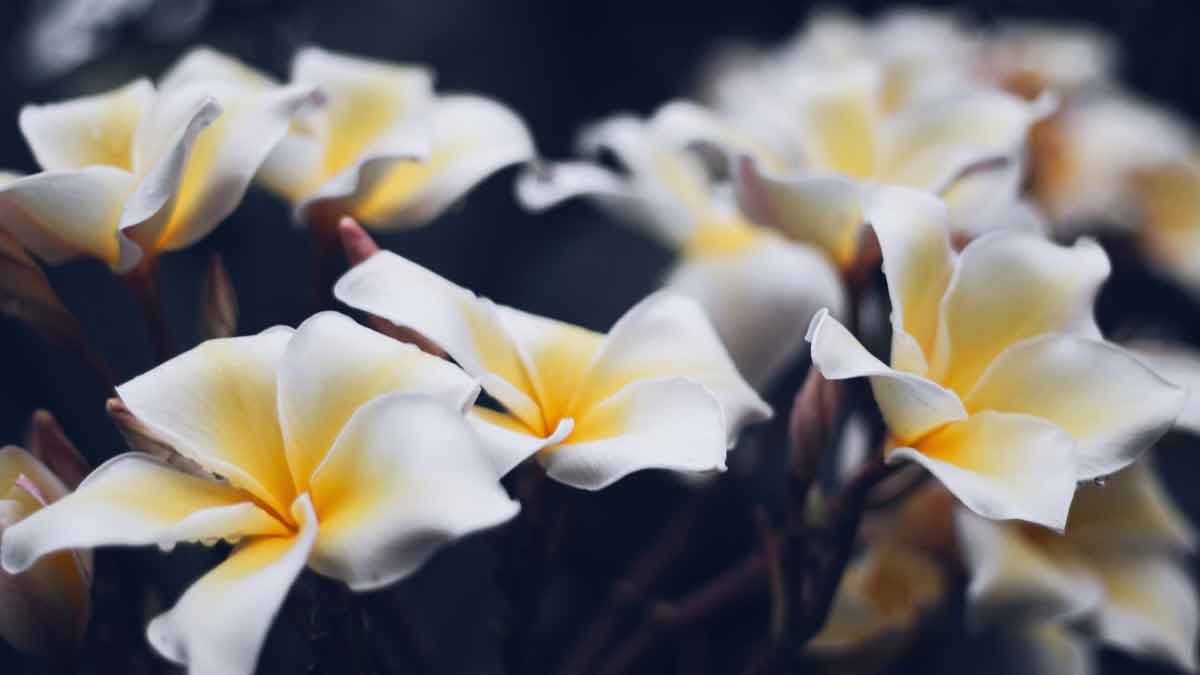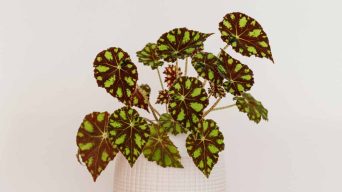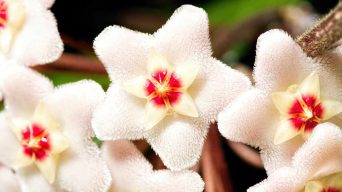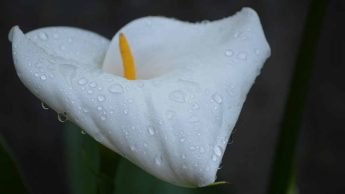Plumeria plants should be allowed to dry out between watering, especially during the rooting stage. Once leaves are present, water once or twice a week in summer. Plumerias can withstand extended periods of being dry. Water deeply when irrigated and then allow to dry out before watering again. Small pots may need daily watering.
Plumeria plants, or frangipani, are popular tropical plants with vibrant and fragrant flowers that instantly transport you to paradise.
Proper care is essential for these exotic beauties to thrive in your garden or home, especially regarding watering routines.
But how often should you water plumeria plants?
This guide will dive into the best practices for quenching your Plumeria’s thirst while avoiding overwatering or underwatering issues.
Understanding Plumeria Plants And Their Watering Needs
Plumeria plants, also known as Frangipani or Lei flowers, are native to tropical regions of Central America and the Caribbean, stretching from Mexico to South America.
These beautiful flowering plants thrive in warm climates with plenty of sunlight and humidity.
Understanding the native environment of your Plumeria plant is essential for providing optimal care.
For instance, if you live in an area that experiences colder temperatures or has less humidity than the plant’s typical tropical climate, it’s crucial to make adjustments to accommodate its needs.
Creating a microclimate inside your home using humidifiers or strategically placing your potted Plumeria near windows for maximum sunlight exposure can help mimic its preferred conditions.
Factors Affecting Watering Needs
Several factors play a crucial role in determining the watering needs of your Plumeria plants, and understanding these variables can help you provide optimal care for these beautiful, fragrant flowers.
One crucial factor is the soil type in which your Plumeria is planted; well-draining soil mixtures allow excess water to escape quickly, preventing root rot caused by overly saturated conditions.
Another vital consideration is the weather and climate in your area. Plumerias thrive in warm temperatures commonly found in their native regions of Central America and South America but struggle under cooler conditions or extreme heat.
During periods of consistent rain or intense heat waves, you may need to adjust your watering schedule accordingly to prevent over-watering or under-watering issues.
Similarly, Plumeria plants grown indoors will have different water requirements compared to those growing outdoors due to variations in humidity levels and sunlight exposure.
How Often To Water Plumeria Plants
For Plumeria plants to flourish, giving them the right amount of water at the right time is essential.
To help you achieve this, we’ll explore the optimal watering frequency for different seasons and share practical tips for caring for potted and ground-planted plumerias across different climate zones.
By following our expert guidance, you’ll be able to ensure that your plumeria plants receive the proper hydration they need to grow healthy and strong.
Watering Frequency For Different Seasons
As the seasons change, so do the watering needs of your Plumeria plant. During the warmer months, particularly in spring and summer, when plumerias are actively growing and blooming, they require more frequent watering to support their growth.
In contrast, during cooler months like fall and winter, when they enter dormancy – a period of reduced activity – their need for water decreases significantly.
It is ideal for keeping them relatively dry by reducing the watering frequency to once every two or four weeks.
Monitor your dormant plants closely; overwatering can lead to root rot, whereas underwatering can cause leaf drop.
Watering Recommendations For Potted And Ground-Planted Plumeria Plants
Plumeria plants can be grown in pots or directly in the ground, and each has its own watering needs.
For potted plants, it’s essential to use well-draining soil and a pot with drainage holes to avoid waterlogging, which can cause root rot.
The watering frequency for potted Plumerias depends on their size and stage of growth.
Younger plants require more frequent watering than mature ones but always allow the soil to dry out before watering again.
On the other hand, for ground-planted plumerias, regular deep watering is crucial as established plants have extensive root systems that absorb water from deeper soil layers.
Depending on your climate zone, it may be necessary to supplement rainfall with occasional deep irrigation- soaking the area around roots so that moisture reaches deep into the soil profile – especially if there has been an extended period without rain.
Plumerias planted in permeable soils need less frequent watering than those in heavy clay or compacted soils.
Watering Guidelines For Newly Planted And Established Plants In Different Climate Zones
When it comes to newly planted Plumeria, the key is to water them regularly and consistently until they establish their roots in the soil.
Watering every other day or even daily is necessary for people living in hot, dry climates, while those living in cooler temperatures can water less frequently.
Established plants need less frequent watering but require a proper schedule based on climate zones.
For example, Plumerias grown in humid areas may be more susceptible to root rot if overwatered and may only require weekly watering during the rainy season.
It’s also worth noting that adding mulch around the base of your Plumeria plant can help retain moisture between waterings while preventing weeds from growing around your plant’s base.
Using a moisture meter or checking the soil for dryness will give you an idea of when to water your plants again.
Best Practices For Watering Plumeria Plants
Watering plumeria plants correctly is crucial to their healthy growth and blooming.
To achieve this, certain best practices must be followed.
These practices involve using appropriate tools and techniques for watering, ensuring optimal soil drainage, identifying both over and underwatering signs, and adjusting fertilization according to watering requirements.
By implementing these methods, plumeria enthusiasts can enjoy beautiful and healthy plants.
Watering Techniques And Tools
When watering your plumeria plant, it’s important to use the correct techniques and tools to ensure proper hydration without causing harm.
One technique is deep watering, which involves soaking the soil around the root ball until water drains out of the bottom.
This ensures that water reaches deep into the roots where it’s needed most.
When choosing a tool for watering your Plumeria, a hose with a gentle spray nozzle or a watering can with a long spout are both effective options.
Let tap water sit out for 24 hours before using it on your plants so that chlorine and other chemicals evaporate.
Monitoring soil moisture levels will also help guide your watering routine and prevent over-watering or under-watering.
Soil Drainage Importance
Proper soil drainage is crucial for plumeria plants as they do not tolerate waterlogged soil.
When planting or repotting Plumeria, it’s crucial to ensure that the pot or ground has adequate drainage holes to allow excess water to seep out.
Plumeria roots can quickly rot if left in standing water or wet soil for prolonged periods, stunting the plant’s growth and even leading to its death.
One way to improve soil drainage is using a well-draining potting mix that allows water to flow quickly while retaining enough moisture for the plant’s needs.
Adding perlite or sand to regular potting mix also helps with improving drainage.
Identifying Signs Of Overwatering Or Underwatering
One common mistake that Plumeria plant owners make is watering their plants too much or too little.
Overwatering can cause root rot and yellowing leaves, while underwatering can lead to dry and brittle leaves.
If you notice that the soil around your Plumeria plant is constantly wet or has a foul smell, it may be a sign of overwatering.
Plumeria yellowing leaves could also indicate an issue with water retention in the roots.
On the other hand, if your plant’s leaves are dry and crispy, it may not be getting enough water.
Fertilization And Its Impact On Watering Needs
Fertilization plays a crucial role in the health and growth of plumeria plants, impacting their watering needs.
Plumerias need 13 essential nutrients to produce healthy leaves and blooms.
Fertilizer provides these nutrients that are necessary for plant growth. When fertilizing plumerias, it is recommended to do so once a week during their growing season (usually from early spring to winter).
It is important to note that fertilizer also impacts the watering needs of plumeria plants.
An adequately fertilized plant will require more water than an unfertilized one due to its increased metabolic activity resulting in higher transpiration rates.
Similarly, if you fail to provide enough fertilizer or use an imbalanced formulation lacking certain elements like potassium or nitrogen, your plant’s ability to absorb moisture may become compromised, leading it to become dehydrated quickly.
Final Thoughts
Proper watering is essential to maintaining healthy plumeria plants, and understanding their unique watering needs is crucial.
Whether you have potted or ground-planted plumerias, it’s essential to water them deeply but infrequently, allowing the soil to dry out between waterings.
During the summer months, plumeria plants may require more frequent watering than in the winter when they are dormant.
Remember not to overwater your plant as this can lead to root rot and eventual death of the entire plant.







